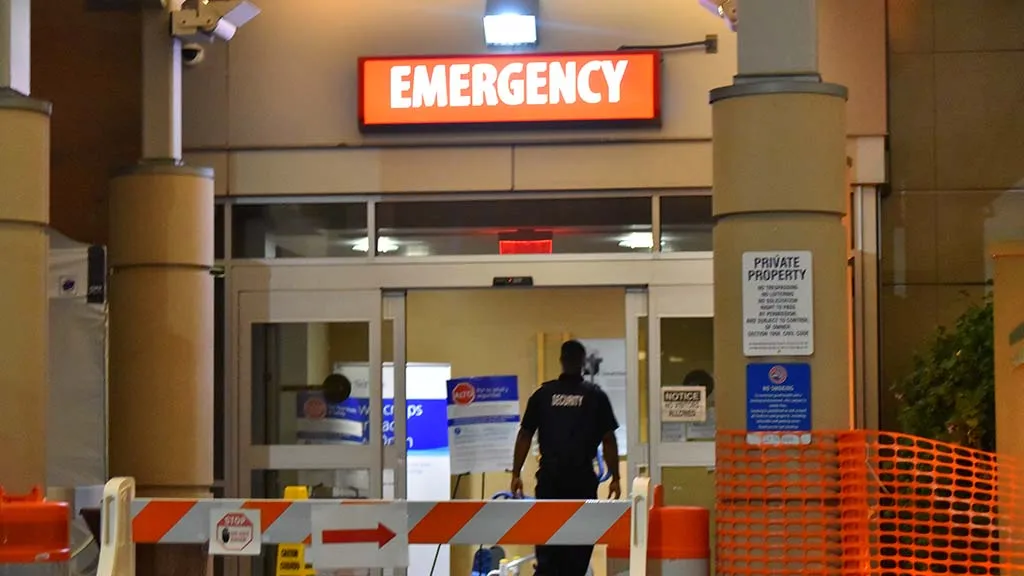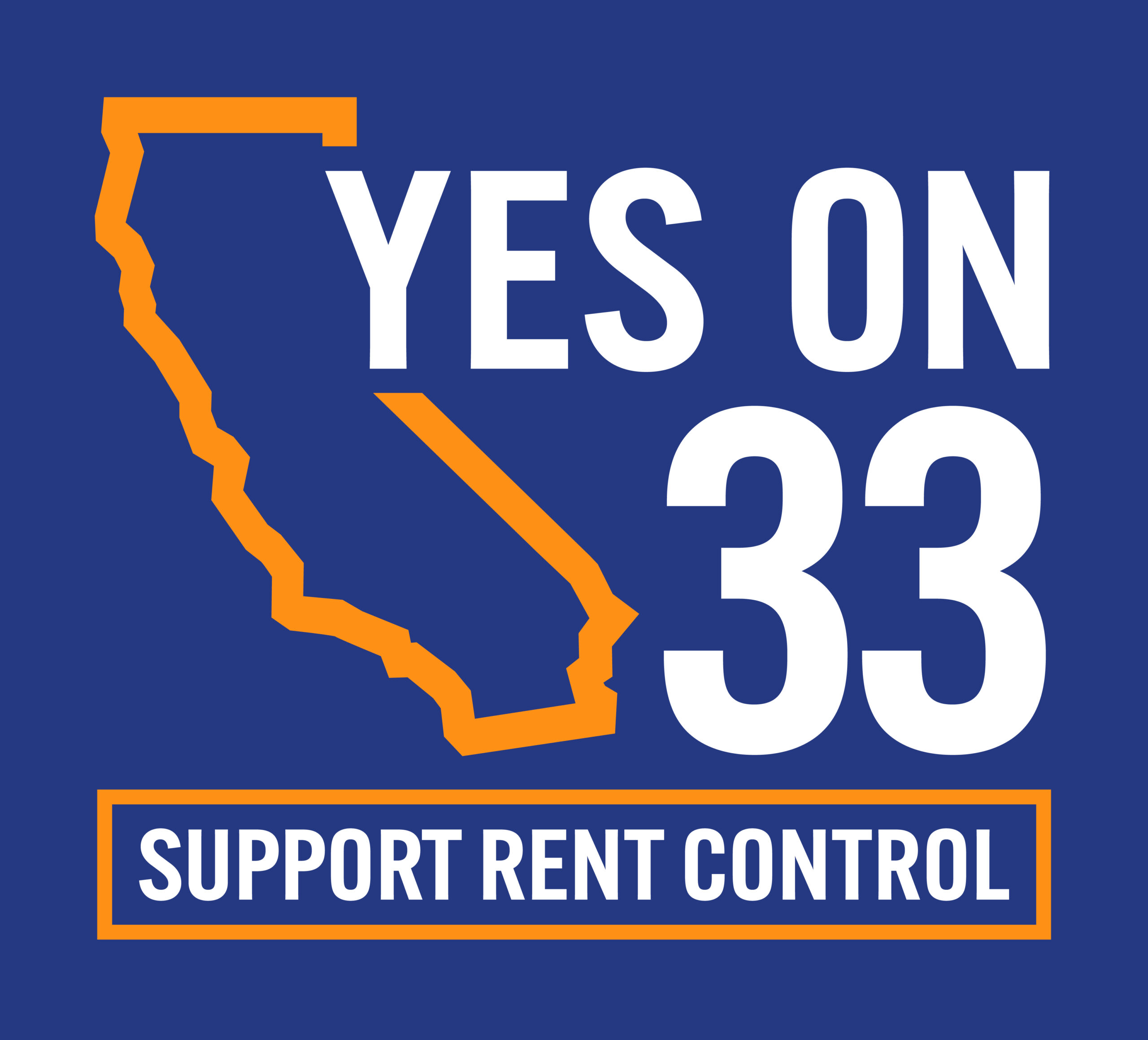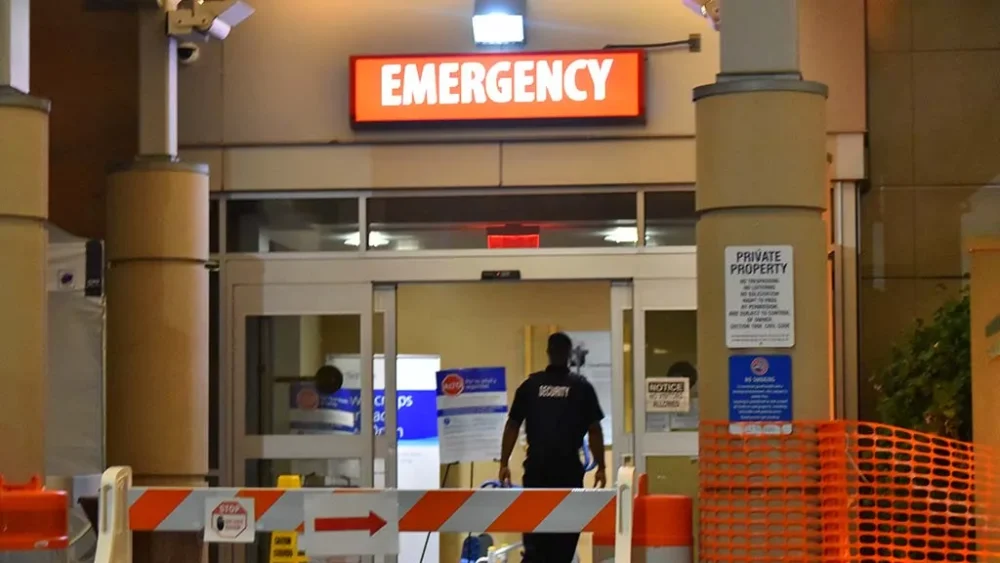
A security officer enters the Scripps Mercy Hospital San Diego emergency entrance. Photo by Chris Stone
While no government program should be immune from criticism, those who call for reforms should at least understand how the 340B program works. The recent column, “It’s Past Time for Congress to Reform 340B—Patients and Clinics Are at Risk,” relies on talking points straight from the drug companies’ playbook.
Parroting the Pharmaceutical Research and Manufacturers of America’s talking points, the author criticizes providers that generate resources from the 340B program in this way, but that is exactly what Congress intended when the program was created.
By definition, 340B providers are nonprofits and cannot turn a profit. Unlike drug companies, they are legally required to use their resources in furtherance of their mission.
As the opinion piece notes, the resources generated are a lifeline for rural hospitals, hemophilia clinics, and other providers essential to maintaining the safety net. The program needs protection, not fundamental reform.
Laura Boudreau
AIDS Healthcare Foundation
Los Angeles

